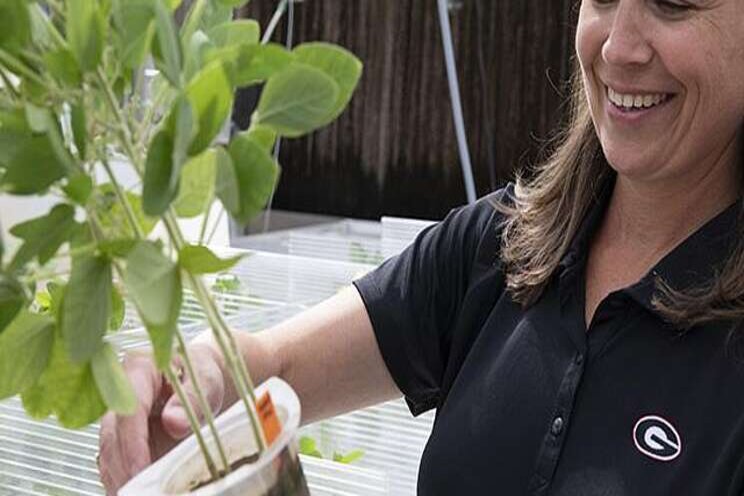This farm grows nematodes
Added on 27 April 2021

Farmers have long relied on a single source of SCN resistance called PI 88788. Nematodes are now adapting to that resistance, while 98% of the soybeans grown in the United States still rely on it. That has put nematologists like Melissa Mitchum in a foot race with the invader.
Mitchum calls the University of Georgia greenhouse the "Tode Farm." Farmer dollars through the soybean checkoff help fund the initiative, which contains the largest active collection of experimentally adapted SCN populations. Soybean researchers and nematologists across the country use the populations in soybean breeding programs as they seek new tools to fight against parasitic nematodes. The populations have also assisted in the soybean checkoff funded SCN genome sequencing project.
Resistance genes in soybeans have different modes of action. "In 2012, the checkoff was instrumental in allowing researchers to identify the genes underlying resistance to SCN," Mitchum said. "Researchers were able to clone the resistance genes found in the most common source of SCN resistance known as PI 88788, as well as a gene that regulates the Peking type of resistance. This allowed our breeders to develop molecular markers on the genes."
Using the molecular markers in the lab, University of Georgia Soybean Breeder and Geneticist Zenglu Li can develop new modes of action by pyramiding resistance genes to enhance the longevity of nematode resistance. "We have a robust pipeline of materials to deliver high-yielding varieties that are resistant to SCN and root-knot nematode," he said. "The gene marker selection accelerates the breeding cycle."
Mitchum explained these research efforts as part of The SCN Coalition's "Let's Talk Todes" video series. You can find the short videos here: https://www.thescncoalition.com/…
According to Mitchum, 30 years ago it was only known that SCN genes were dominant or recessive -- that they could be inherited. "Three decades later, we have the genetic and molecular tools to not only sequence the nematode genome, but sequence a wide variety of SCN populations," she said. "The Tode Farm is being used to compare the genomes to pinpoint the genes for virulence."
With genetic blueprints in hand, scientists now have the opportunity to exploit this rich collection of genetic resources to identify the virulence genes SCN uses to reproduce on resistant varieties, she noted.
"More importantly, the door is now open to developing a molecular diagnostic tool to determine the virulence of field populations and prescribe the best type of resistance for growers to plant.
"For prescriptive management to become a reality for growers, we need to integrate our knowledge of the genetics of plant resistance genes with the knowledge of the SCN virulence genes," she said.
Take a video tour of the Tode Farm here: https://www.youtube.com/…
Find more SCN information: www.thescncoalition.com
Read more about why SCN resistance isn't enough protection: https://www.dtnpf.com/…
Learn how SCN is spreading: https://www.dtnpf.com/…
As well as here: https://www.dtnpf.com/…
Pamela Smith can be reached at pamela.smith@dtn.com
Follow her on Twitter @PamSmithDTN
(c) Copyright 2021 DTN, LLC. All rights reserved.
Source and Photo Courtesy of DTN Progressive Farmer
Source: DTN Progressive Farmer
More news















